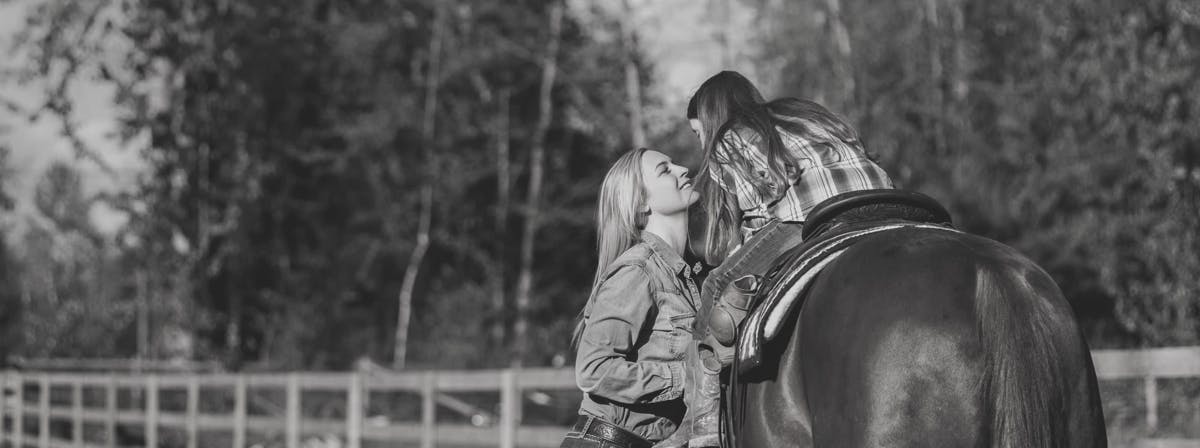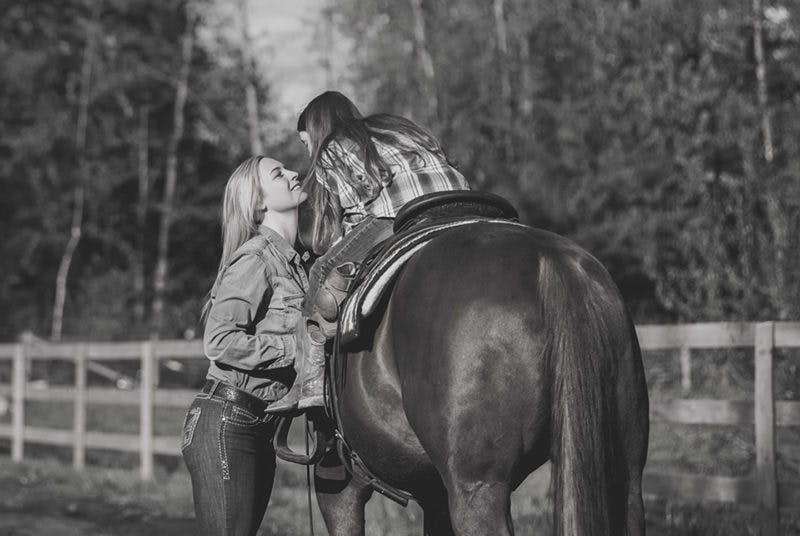You’ve been eyeing equestrian properties for months. It’s been your dream to own a horse property that is everything you could have asked for. You may have been riding since you were a little kid, and now it’s time to take the equestrian in you to new heights.
Whatever your story, you’re ready to plan the equestrian property you fall in love with for years and years to come.
Now you need to start preparing and researching so you don’t end up in over your head.
That’s why I’ve created this checklist to help you along.
What to Consider When Planning Your Equestrian Property
1) Location, Location, Location
Try not to fall head over hooves with an equestrian property until you’ve considered its location. While you may prefer a cozy, quaint, and remote area, you must still think about your everyday life when choosing a horse property as your home. Take into account your access to resources, nearby landmarks, neighbors, and your commute to central areas. Just as if you were buying a traditional home, remember all your needs before purchasing an equestrian property. Consult a realtor that specializes in horse properties (like myself) to help you make the best decision.
2) Budget and Timeline
Building a horse property from the ground up is no easy task. Like any good plan, know the estimated time it will take from start to finish. It can be costly to create the equestrian property of your dreams in one go; completing the project in stages may be beneficial for your own sanity as well as your wallet. However, if you know what you want, understand all the associated costs, and can afford to take it on all at once, go for it.
3) Hobbyist or Professional
This goes back to knowing your needs. Before considering any of the following factors in your plan, make sure your equestrian property is designed with you in mind. A hobbyist equestrian or casual rider doesn’t require the same functionality and planning as a professional equestrian, and likewise, a professional will often need a horse property planned with stricter requirements and higher standards.
4) Pasture Planning
This is more than planning the mere size of the acreage, you must also consider the carrying capacity of the land itself for both riders and horses. Don’t limit these considerations to x acres of land for y number of horses. Choose acreage based on creating a healthy environment and managing your equestrian property responsibly. Other factors include the ability to create designated fields for different horses’ needs, the use of the land for grazing vs exercise, space for shelter and storage, water sources, and even any future plans for expansion.
5) Air Quality
Not only should the outdoor environment have proper air quality, horse shelters and barns must also have decent air quality and ventilation. Just like people, air quality is essential for your horses’ health and wellbeing. Poor air quality runs several risks including pathogens, unsanitary conditions, higher mortality rates, and lower performance.
6) Horse Barn
Horses thrive best when allowed to roam in their designated pastures, but horse barns should not be done away with. Barns serve to protect horses from environmental hazards, provide areas for horse grooming and maintenance, and security.
Does your barn provide proper accommodations and comforts for your horses? Don’t forget to plan out materials, sizing, structure, capacity for owners, workers, and riders as well as horses, temperature, air quality, ventilation, flooring, and safety from wildlife.
7) Stall Design
This is where the features and fixtures come in. Plan out any amenities such as windows, access to outdoor areas, stall doors, and in-between stall walls. Never sacrifice the stall’s quality or the horse’s comfort and needs for the sake of aesthetics. A design should first and foremost be functional, then aesthetically pleasing.
8) Horse Fencing
Horse fencing is one of the most important factors to consider for your equestrian property. Durable and reliable horse fencing should keep horses from escaping, safe from harm from outside wildlife, and should not cause injury to the horse. Because quality horse fencing is absolutely crucial to any horse property, invest the necessary funds to ensure it is top-notch. No cutting corners.
9) Stable Fire Safety
Stable fires claim many horses’ lives every year. The sad thing is, many could have been prevented if safety precautions were in place. Brush up on your fire safety and possibly have your local fire department come to check for any fire hazards that need to be resolved.
10) Hay Storage
Improperly storing hay can cost you money and sick horses down the road. Never store hay with levels of moisture – make sure they are fully dried to prevent mold and bacteria from growing. Decide whether you will store your hay with a proper roof cover or will keep it protected by covering with tarps or plastic. Taking into account the space needed to store hay on your equestrian property should also be included as part of your plans.
11) Tack Room
Keep a well-organized tack room on your horse property for storing all necessary tools and supplies for grooming, cleaning, horse riding, and more. Remember to make this room easily accessible, convenient, and locked for added security.
12) Grooming Areas
Ensure you have proper facilities and access to any other resources needed for horse grooming procedures. Again, make sure your property has the space to accommodate these areas, especially if you have multiple workers and groom multiple horses at the same time.
13) Indoor Arena & Outdoor Arena
Your riding arena should be the highest planned factor of your equestrian property. There are way too many aspects to consider for building your indoor or outdoor riding arena in this post, but the most basic points to prepare for are size, environmental conditions, location, soil/drainage, building materials, surfaces, added fixtures/features, maintenance, budget/costs, safety, warranties, and permissions.
Bonus: Hiring a Professional
Lastly, it may be fun to research, plan, and attempt to DIY the equestrian property of your dreams, but a project this important might be better left in the hands of professional contractors, realtors, architects, and designers who are knowledgeable in the safest and best practices. You can even find those who specialize in equestrian properties and can guarantee they are experienced in working with horse owners. You will be better off investing in professional help now to ensure an equestrian property you’ll fall in love with.
Still in the process of finding your dream equestrian property to own? Get in touch with me and let’s work together.
Thinking of buying or selling real estate in the Fraser Valley? Let’s talk!



